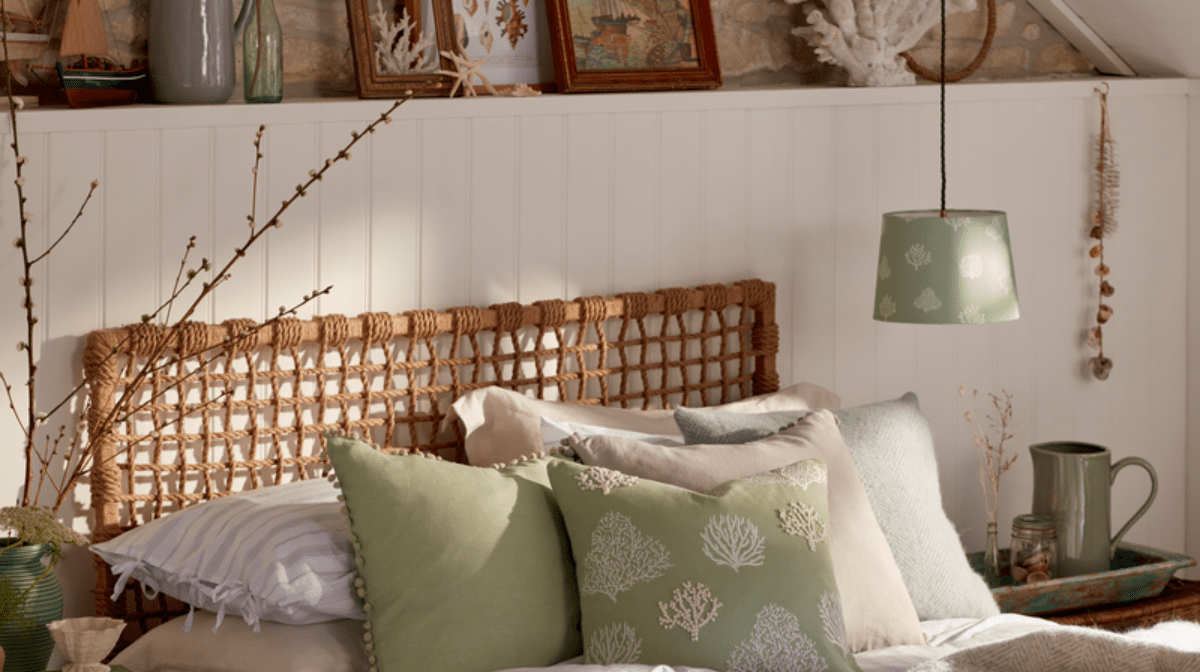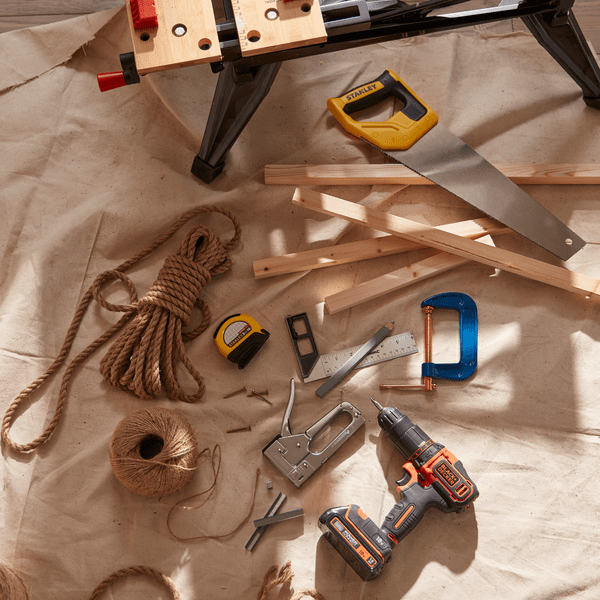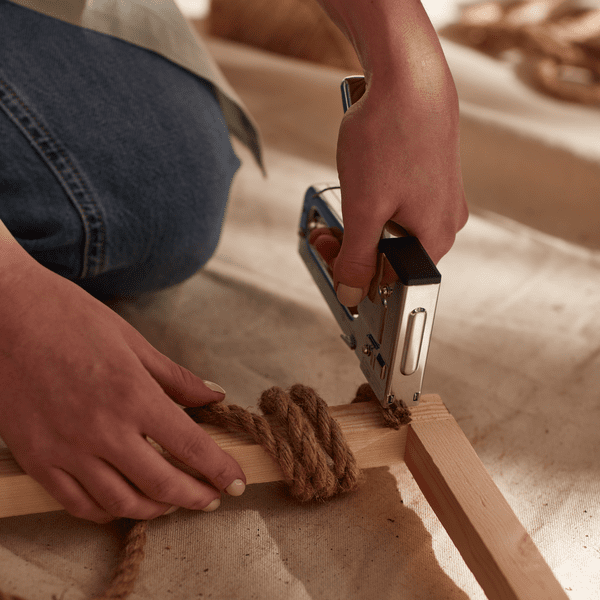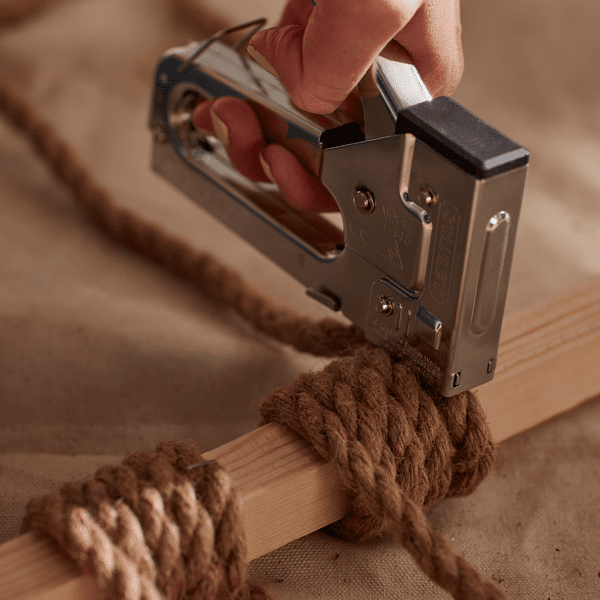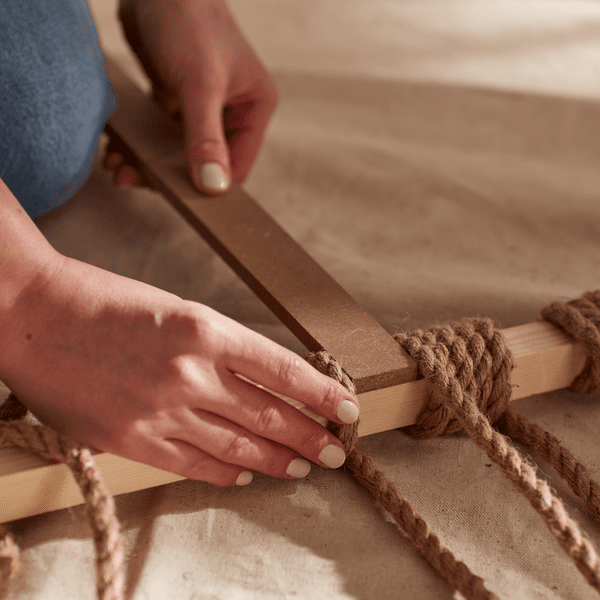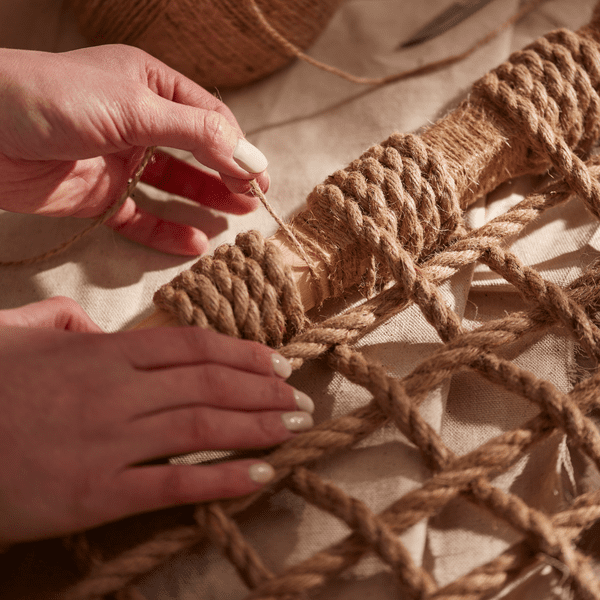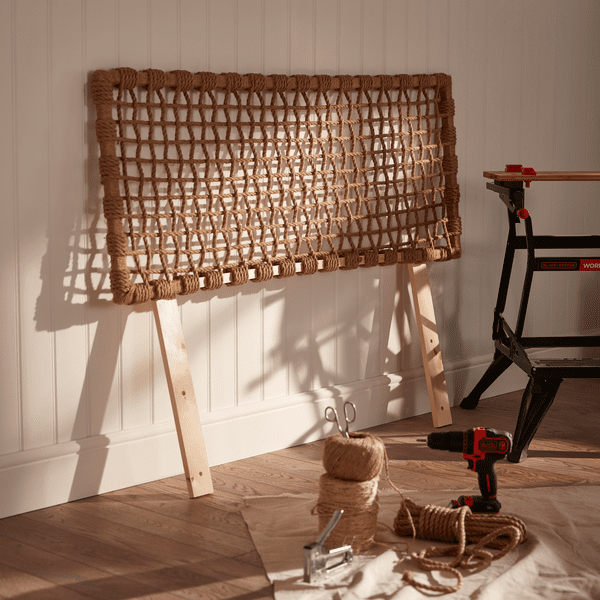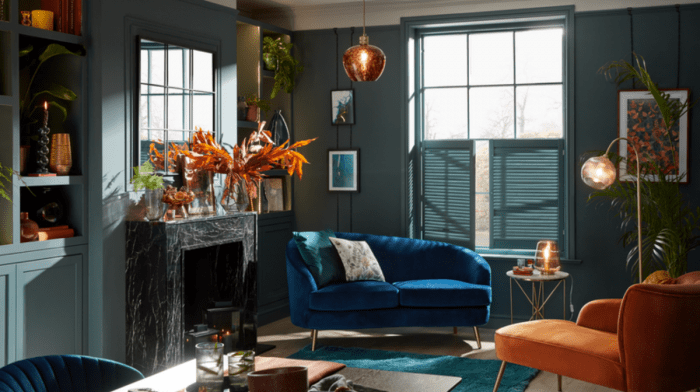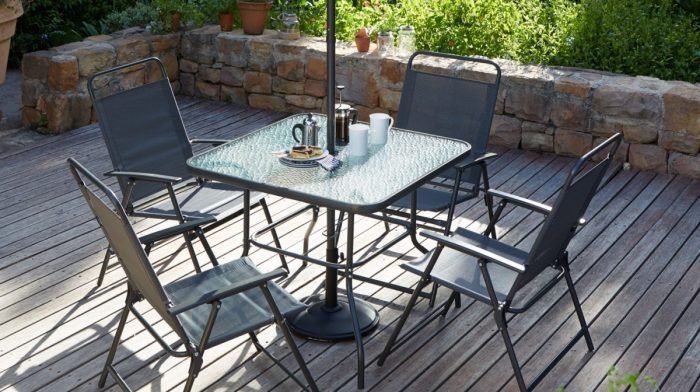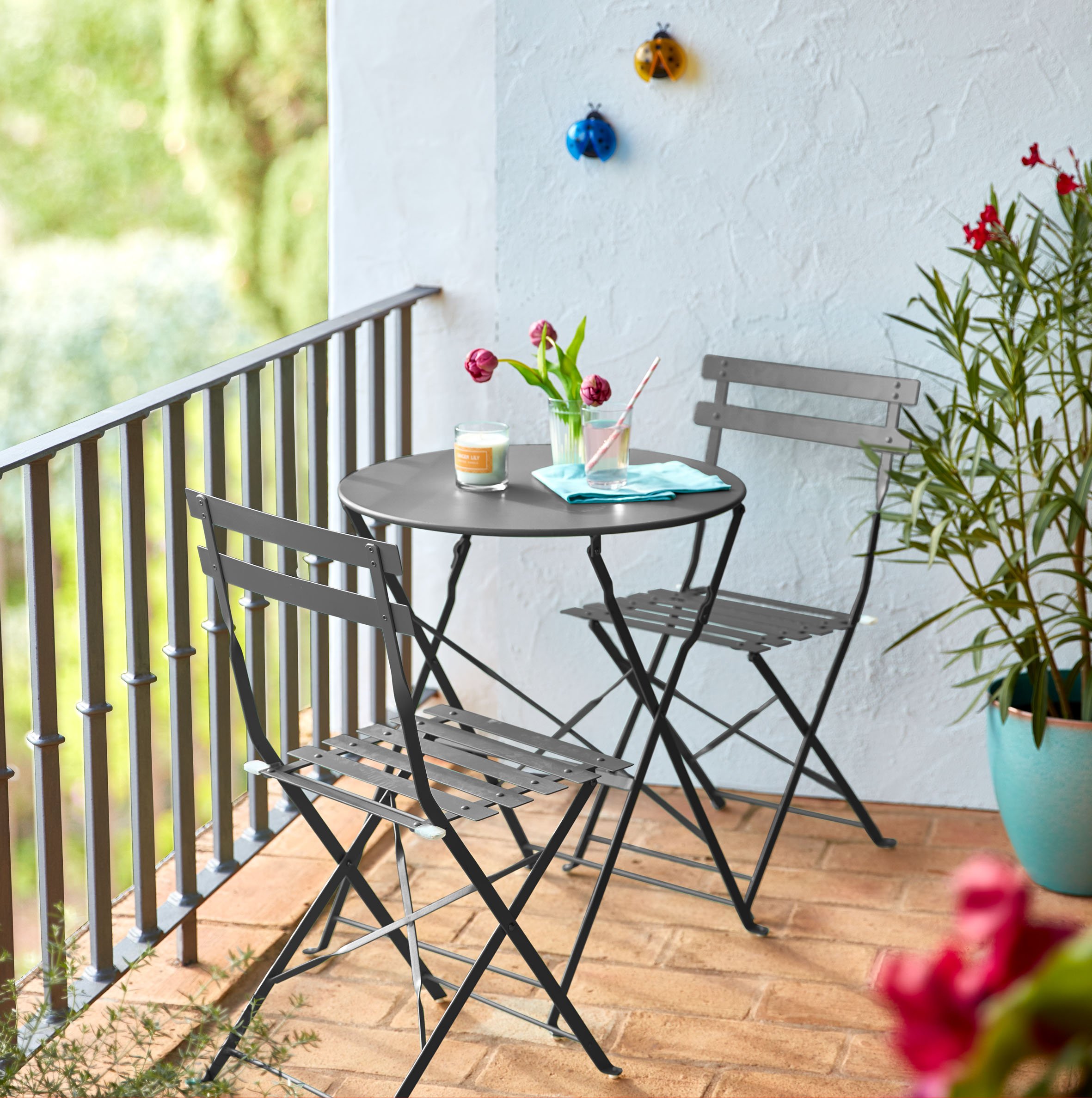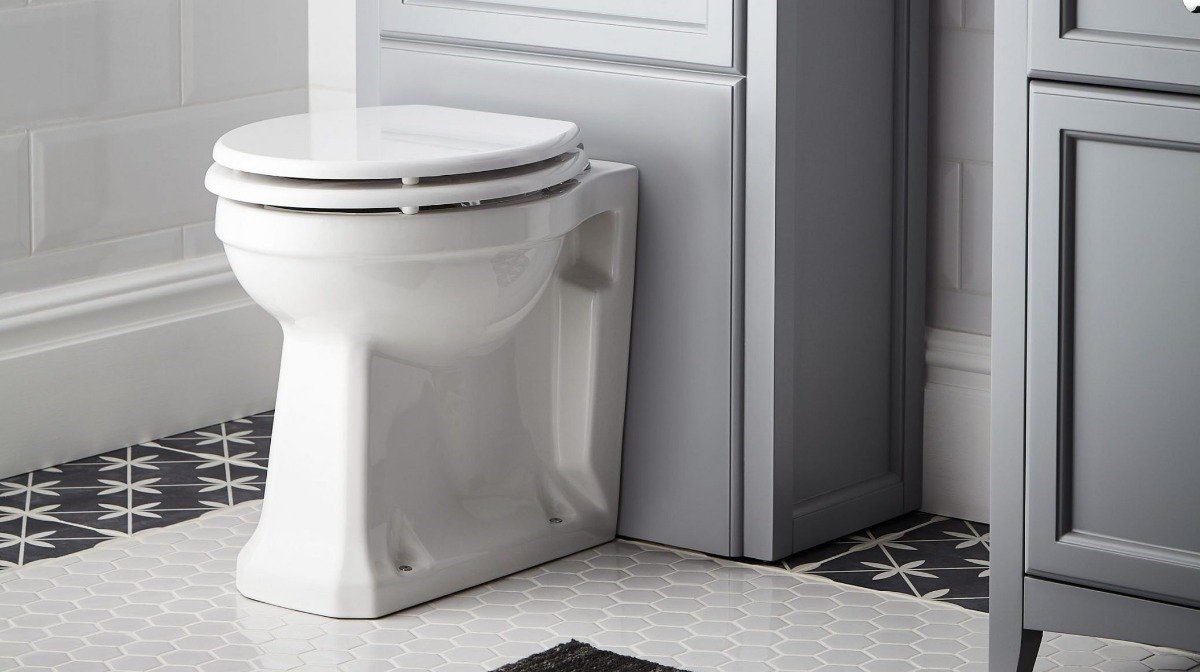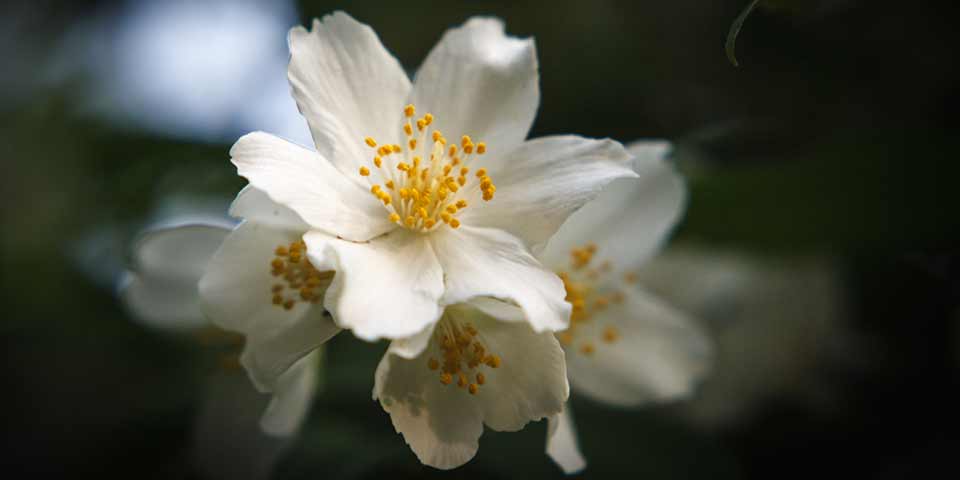Learning how to make a headboard is a simple way to create a stunning new focal point in your bedroom and allows you to add a personal touch to your interiors. Often, buying a new bedframe is an unnecessary expense – so, try creating a cheap DIY headboard instead! From easy upholstery to a DIY wooden headboard, we’ve gathered a few of our favourite DIY headboard ideas to provide a little inspiration.
A rustic rope weave
A stunning nod to simple Scandinavian interiors, why not give our woven DIY headboard project a go? Requiring minimal equipment and materials, it’s a great way to add a little flair to your sleeping space. Simply follow these easy steps, referring to the handy visual guide below.
First, you’ll need to create a sturdy rectangular frame, which will form the main structure of your headboard. Next, you’ll need a long length of medium-thickness rope. Wrap the rope around your frame four times, securing the end with a staple gun. Pull the rope taut across the width of your frame, wrapping it around the opposite side in the same way.
With one diagonal rope in place across the width of your headboard, train the rope back across to the side of the frame you started on and wind around the wood again. Repeat this until the headboard is covered, using a spacer to ensure equal distance between each rope line and fixing the rope in position with a staple gun.
With your horizontal lines complete, you can start to attach the vertical ropes in the same way. To create the Scandi-inspired weave effect, alternate your vertical rope under and over the horizontal lines.
Once you’ve worked across the headboard with evenly spaced vertical lines, you’re almost done! As a finishing touch, wrap brown gardening twine around the remaining exposed wooden frame to complete your beautiful and unique DIY headboard.

